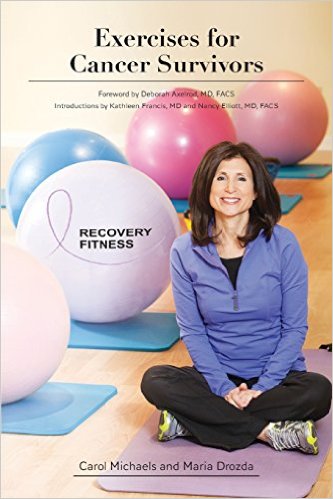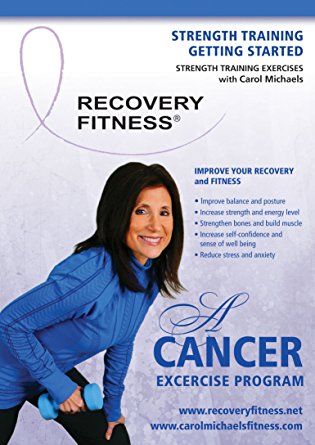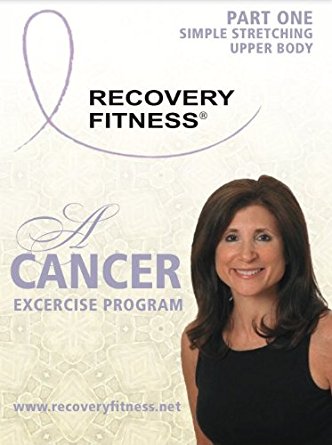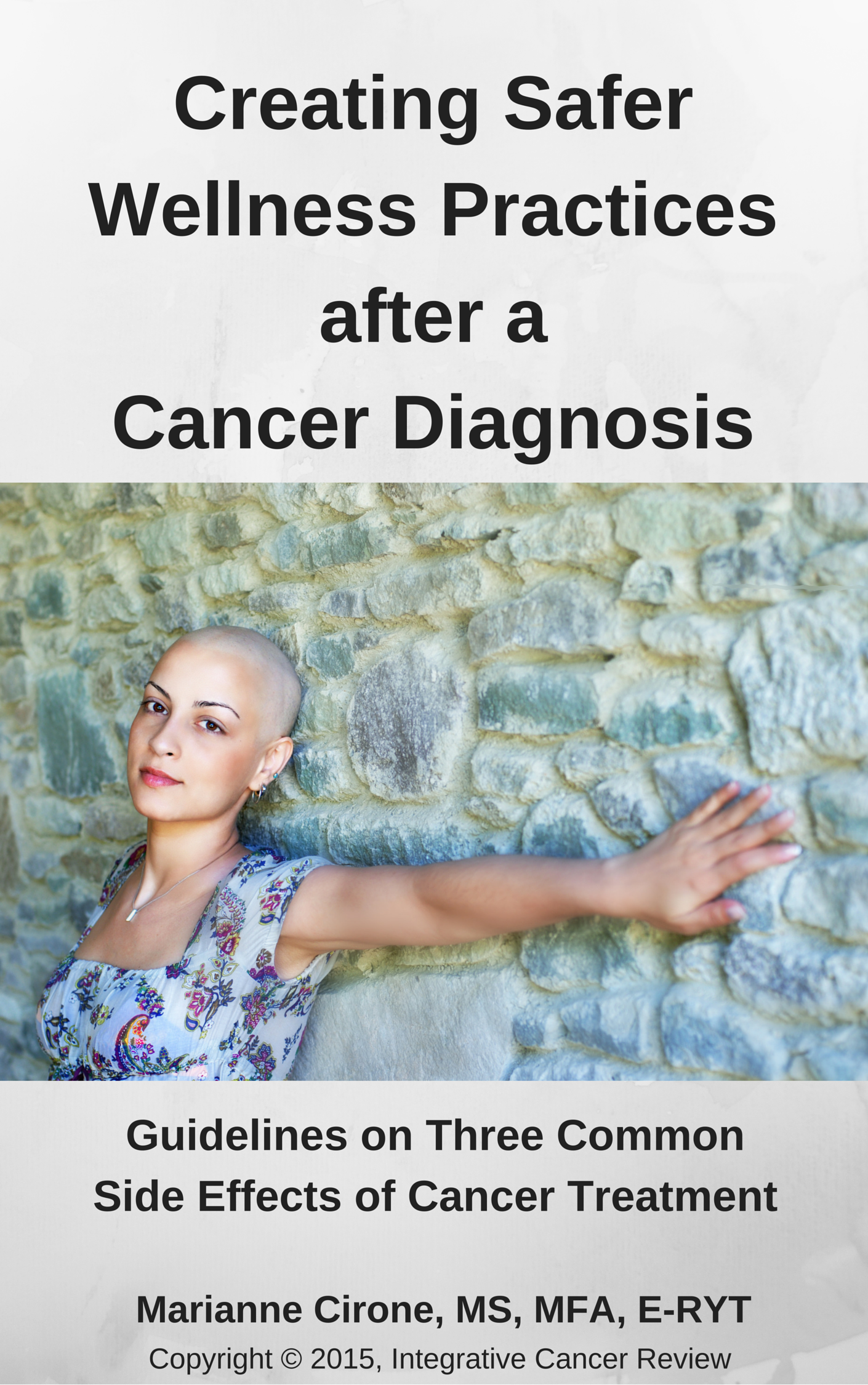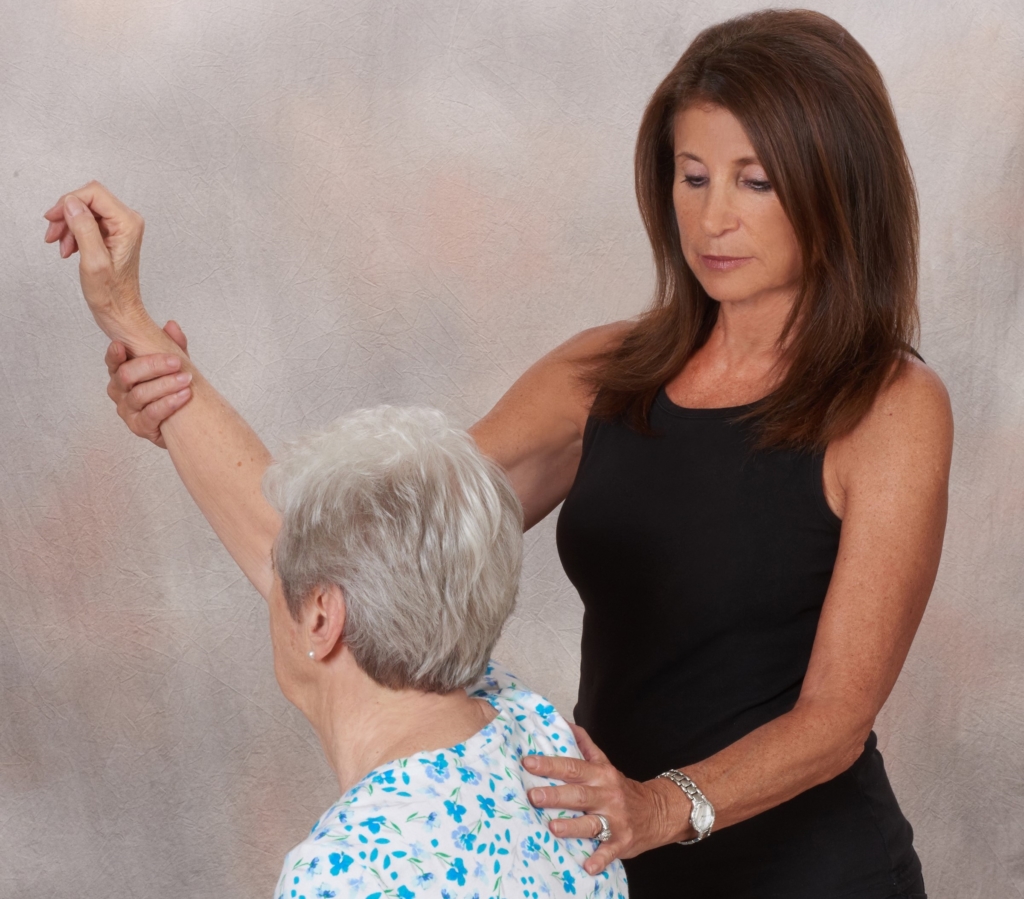
 Carol Michaels is the founder of Recovery Fitness® and the author of Exercises for Cancer Survivors as well as the Cancer Exercise Strength Training-Recovery Fitness and Cancer Gentle Stretching Exercise- Recovery Fitness DVDs. Carol is the creator of the Cancer Recovery Specialist continuing education course for the National Federation of Professional Trainers (NFPT), and she was named as the IDEA Health & Fitness Personal Trainer of the Year in 2016.
Carol Michaels is the founder of Recovery Fitness® and the author of Exercises for Cancer Survivors as well as the Cancer Exercise Strength Training-Recovery Fitness and Cancer Gentle Stretching Exercise- Recovery Fitness DVDs. Carol is the creator of the Cancer Recovery Specialist continuing education course for the National Federation of Professional Trainers (NFPT), and she was named as the IDEA Health & Fitness Personal Trainer of the Year in 2016.
In the following interview with the Integrative Cancer Review, Carol shares her wealth of knowledge on the critical importance of exercise for cancer patients and survivors– and what every person diagnosed with cancer should know about exercising.
Can you tell us about Recovery Fitness®?
The Recovery Fitness® cancer exercise program is a comprised of a series of unique, safe and effective exercises. The stretches and strengthening exercises are a combination of traditional rehabilitative type exercise combined with elements of other movement methods such as Pilates, yoga, and gyrotonics.
My decades of experience in the fitness field enabled me to create the exercises that we use in the program to improve recovery. Recovery Fitness®, is different from other exercise programs because each person is individually assessed and placed in a small group where everyone is on a similar level. We tailor a fitness program to address the effects of the specific surgery and the specific treatment. It is impossible to have rigid protocols. There are way too many variables.
The Recovery Fitness® program teaches cancer survivors how to exercise properly and safely in a manner, taking their particular surgery and treatment into account, so that they can reach a fitness level that provides them with confidence and peace of mind.
How did you get involved in the field of exercise for cancer survivors?
Cancer has been part of my world for over thirty years. My mother, father, and many other family members and friends have battled this disease. Cancer patients often have a difficult time recovering and develop frozen shoulder, stiffness, and numbness due to surgery and treatments.
Because many of these side effects can be prevented through proper exercise, I created a series of stretches and strengthening exercises to help eliminate or minimize these side effects. This resulted in my creating the Recovery Fitness® cancer exercise program which was inspired by and is dedicated to these courageous people.
I began to set up meetings and presentations to physicians in my area to discuss the exercise program. They were excited about having a place to send their patients after, and as an adjunct to, physical therapy.
What is most important for cancer patients and survivors to know about exercise during and after their treatment?
Sometimes the patient is so overwhelmed by their diagnosis that they are unable to comprehend the specifics of the chemotherapy or the exact details of the surgery. Most doctors do not have time to review all the potential side effects from the surgery and chemo, so you have to do your own research and be your own advocate. I am able to help my clients to better understand their physical condition so that they understand why some exercises are very helpful for them and why some exercises could be harmful.
It is important for some cancer survivors to learn how to strengthen certain muscle groups which must compensate for the changes that have occurred during the surgery. For example, reconstruction surgery, such as TRAM and LAT flap, change muscle location. This changed location requires that the obliques and back muscles be strengthened to replace the function of the surgically altered muscles.
Cancer survivors often undergo lymph node removal, which may increase the risk of developing lymphedema. It is safe to exercise with lymphedema and moreover, the right type of exercise may reduce flare-ups of lymphedema. Therefore, cancer survivors who have, or are at risk for, lymphedema need to learn how to exercise properly. Other common side effects helped by exercise are poor posture, poor balance and osteoporosis.
There is a tremendous amount of information that people do not know about when starting to exercise during or after cancer treatment, which is why I wrote Exercises for Cancer Survivors. Someone with a new cancer diagnosis needs to learn everything they can about their type of cancer. There are wonderful resources to help: books, support groups, cancer coaches, and the Integrative Cancer Review website.
I always recommend starting with relaxation breathing and adding rehabilitative stretches and walking as soon as possible after receiving medical clearance.
What are the benefits of Recovery Fitness® for cancer survivors?
These exercises can be done in a private setting or in a group setting that can act as a support group and they can be done with others with similar issues. My clients are motivated to work with me because of the breadth and depth of my knowledge and experience in the fields of cancer/exercise and osteoporosis. They are usually referred to me from former and current clients, their oncologists or other health professionals.
Because my exercise groups are comprised of patients with similar cancers, surgeries, issues and concerns, it makes taking care of health both enjoyable and cost effective. The participants have fun, are motivated and inspired while they improve posture, balance, flexibility, and strength. My clients improve their energy levels and increase their endurance at the same time that they are strengthening their heart and bones. The program also helps to reduce their levels of stress, anxiety, and depression.
The social component of fitness is very powerful and motivating. Oftentimes, I am working with people who never exercised regularly, prior to the Recovery Fitness program. They are motivated to keep coming back partly due to the friendships developed in the class. They feel good about developing new healthy lifestyle changes.
I inspire and motivate my clients by providing them with hope, relevant information, and a positive energy. Many participants have told me that these sessions are the only settings in which they feel comfortable exercising without their wig.
Our classes not only help the participants heal physically, but also help to restore their self-esteem. The Recovery Fitness® program empowers cancer survivors to go back to their families, jobs and activities that they enjoy, and to take charge of their lives.
What is your mission and how do you share that mission?
My personal mission is to have a positive impact on peoples’ lives and to be a source of hope and healing. I educate cancer survivors about the importance of exercise and healthy lifestyles and I have helped hundreds of cancer patients and many others to improve their quality of life.
Recovery Fitness® has a broad impact in a number of communities and the results have been excellent in both urban and suburban communities. We have received grants to bring the programs to hospitals, which enables survivors with limited financial means to improve their health and become active productive members of their community.
Some medical professionals are starting to understand that a cancer exercise program should be as fundamental in the care of cancer patients as surgery, chemotherapy, and radiation. Fitness professionals and the medical community must work together so that tremendous health care costs, overcrowded hospitals, and an unhealthy population will not over burden our country.
Can you share a sample Case Study on the type of work you are doing?
Case Study: Ann had a double mastectomy with TRAM flap reconstruction. In TRAM flap reconstructive surgery, the rectus abdominus muscle is tunneled through the body to create a breast mound. This leaves the patient without the normal use of their rectus abdominus, which is a muscle that supports and stabilizes the spine, helps maintain good posture, bend forward, and plays a role in strength, posture, balance and flexibility. Weakness in this area can pave the way for back problems. The TRAM flap surgery can weaken the foundation or core of the body and for some patients, is being replaced by newer techniques.
With Ann, we started with a full fitness assessment and found that she was weak and had poor range of motion due to the surgery and lymph node dissection. Because of her mastectomy, she had poor shoulder range of motion (ROM), so we started with ROM exercises. When she saw shoulder flexion improve by 20 degrees in one week she was inspired to keep at it.
In order to achieve her goal of a full recovery without long lasting, debilitating impairments, Ann learned how to strengthen her obliques and back muscles, which compensate for the change in placement of the rectus abdominus.
Another issue with which she had to contend with was her weight gain due to treatments. Learning strength training helped Ann get her weight back to a healthy level. We added weights, progressing very slowly because she is at risk for lymphedema.
Ann performs her stretches and strengthening exercises diligently. Our talks and my program inspired her to regain and even improve her fitness level prior to her diagnosis. When clients achieve results, they are inspired and motivated to continue their exercise program.
What advice do you have for wellness professionals who want to work with cancer patients and survivors?
You must have a never give up attitude. It is not easy to set up a meeting with a physician. It is important to build these relationships so that you can talk to the clients’ doctor when necessary. Once you get in there, you better know your stuff. This is accomplished by reading everything in your field that is available and meeting as many health professionals as possible. It is necessary to read cancer publications, study cancer-related websites and stay informed on the latest reconstructions and treatments.
In order to help other personal trainers work with their clients who have cancer, I created the Cancer Recovery Specialist continuing education course for the National Federation of Professional Trainers (NFPT). To take the NFPT Cancer Recovery Specialist course, go to https://www.nfpt.com/product/cancer-recovery-specialist.
How can we find out more about you and the Recovery Fitness® program resources?
Go to www.CarolMichaelsFitness.com and Facebook.com/RecoveryFitness.
The book, Exercises for Cancer Survivors and the Recovery Fitness® DVDs, Cancer Exercise Strength Training-Recovery Fitness and Cancer Gentle Stretching Exercise- Recovery Fitness can be purchased by going to the website using PayPal or through Amazon. Proceeds from sales of the book and DVDs go to cancer charities.

